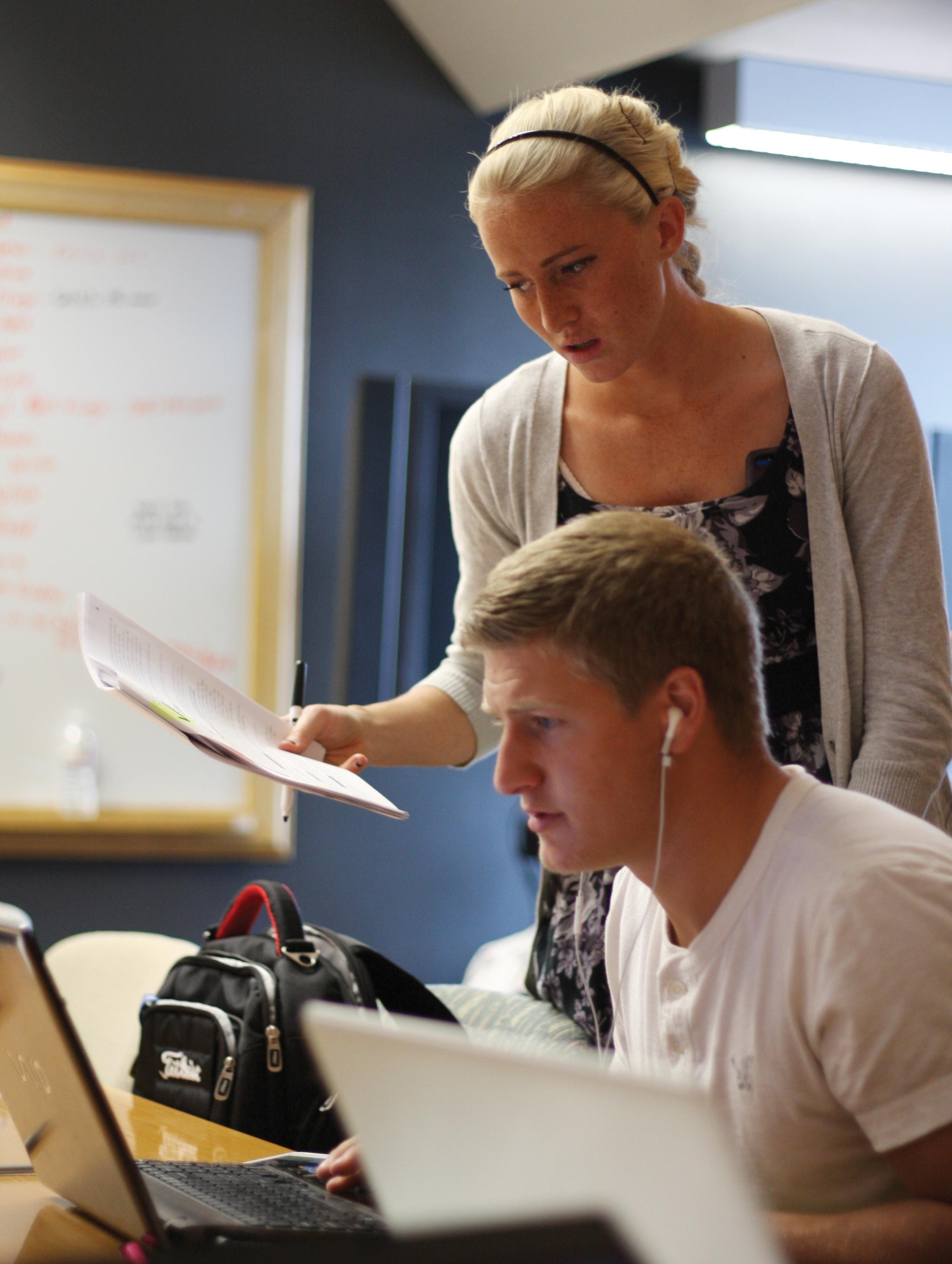Bombs, blood and Bigfoot
Bombs, car accidents and even Bigfoot sightings set the stage for the journalism and communication department’s day of simulated crisis, CommStrong, on Friday.
Assistant professor and CommStrong organizer, Matthew LaPlante, said it is intended for the students to learn how to communicate in a crisis by playing an assigned media role while reporting on a series of staged crises for a whole day.
LaPlante said this year’s approximately 50 participants were spread across six teams: two print newspapers, two public relations agencies, a public radio station and a public TV station. Some of the students played roles that were a little out of their element.
“What we are really learning about is not how to be a print reporter or how to be a PR representative,” he said. “The lessons for communicating in a crisis apply across the board.”
Stewart Ulrich, a sophomore majoring in journalism, played a writer for the fictional newspaper “The Logan Ledger.”
“We are the biggest newspaper in Cache Valley, and we have so many things going on,” he said. “There’s car crashes. There’s murders. There’s cattle thefts. There’s new city guidelines. There’s a city strike. We have probably 20 stories going on right now.”
At one point, several of the students attending a press conference to hear the anticipated guest, fictional political pundit Ben Gleck, speak on the steps of Old Main, ended up getting their phones, recorders and notebooks confiscated and were sent to ‘the hospital’ until a designated time after a fake bomb blew up at the site.
Behind the scenes, student volunteers acted as shadow players making phone calls, playing different roles and running the show, LaPlante said. A few drama students from Logan High School also lent their services this year.
Brandon Carrico, a sophomore at Logan High, played the mayor of Logan for the day.
“I’ve gotten a lot of phone calls for that,” he said. “The mayor of Logan has a pretty stressful job.”
Carrico also played other roles throughout the day, including a “Ben Gleck” super fan, a police officer and various witnesses to crises.
“We are just a lot of the people,” he said.
Ulrich said the event was chaotic, but being part of a team makes it easier.
“It’s been kind of crazy but good to say like, ‘Hey, you do this,’ ‘What’s this?’ ‘What’s the update on that?'” he said.
Seth Merrill, one of the student organizers for CommStrong, said the script used for all of the shadow players has been in progress for months.
“It’s like three or four hours a week spent meeting as a team and deciding how we are going to do this,” he said. “We will be starting next year’s script right after this year’s is over.”
LaPlante said the event was modeled after a similar event held at the University of Utah S. J. Quinney College of Law where the final for a national security law class is held.
“The final for the class is an all-day simulated crisis,” he said. “The students all play the roles of defense leaders like the president, vice president, and secretary of defense.”
LaPlante was asked to cover the story as a reporter for The Salt Lake Tribune and was later asked to bring a group of journalism students to help make the media aspect of the crisis more real.
Once LaPlante became a teacher at USU, he took a team of students down to play the media again and one of the students mentioned they should do it in Logan.
“So we created this simulated crisis,” he said. “We called it CommStrong, and instead of the roles of leaders in a crisis, they play the roles of media in a crisis.”
After the first trial of CommStrong at USU, LaPlante asked people to rate their educational experience with the exercise on a scale of zero to 10.
“We got an 8.7,” he said.
In the future, the hope is to make the event even more stressful and get more funding for it, Merrill said.
“Right now, we are doing it on less than $100,” he said.
–ashlyn.tucker@aggiemail.usu.edu

